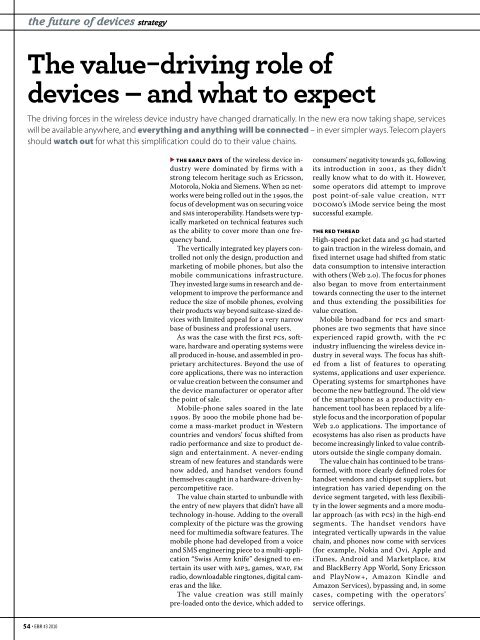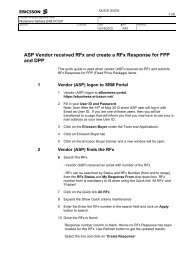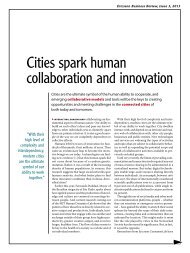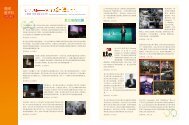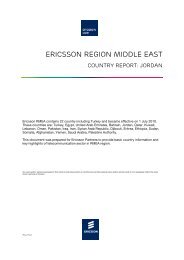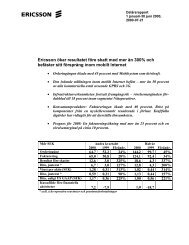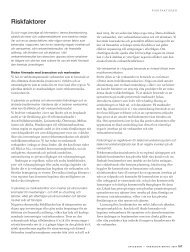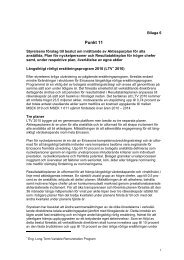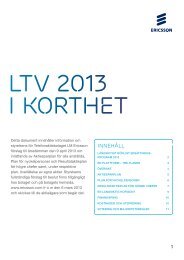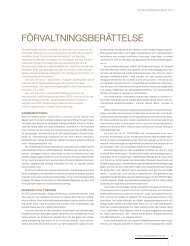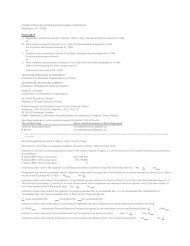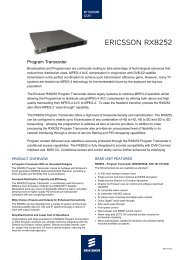Telenor's - Ericsson
Telenor's - Ericsson
Telenor's - Ericsson
- TAGS
- ericsson
- www.ericsson.com
You also want an ePaper? Increase the reach of your titles
YUMPU automatically turns print PDFs into web optimized ePapers that Google loves.
the future of devices strategy<br />
The value−driving role of<br />
devices – and what to expect<br />
The driving forces in the wireless device industry have changed dramatically. In the new era now taking shape, services<br />
will be available anywhere, and everything and anything will be connected – in ever simpler ways. Telecom players<br />
should watch out for what this simplification could do to their value chains.<br />
54 EBR #3 2010<br />
▶ THE EARLY DAYS of the wireless device industry<br />
were dominated by firms with a<br />
strong telecom heritage such as <strong>Ericsson</strong>,<br />
Motorola, Nokia and Siemens. When 2g networks<br />
were being rolled out in the 1990s, the<br />
focus of development was on securing voice<br />
and sms interoperability. Handsets were typically<br />
marketed on technical features such<br />
as the ability to cover more than one frequency<br />
band.<br />
The vertically integrated key players controlled<br />
not only the design, production and<br />
marketing of mobile phones, but also the<br />
mobile communications infrastructure.<br />
They invested large sums in research and development<br />
to improve the performance and<br />
reduce the size of mobile phones, evolving<br />
their products way beyond suitcase-sized devices<br />
with limited appeal for a very narrow<br />
base of business and professional users.<br />
As was the case with the first pcs, software,<br />
hardware and operating systems were<br />
all produced in-house, and assembled in proprietary<br />
architectures. Beyond the use of<br />
core applications, there was no interaction<br />
or value creation between the consumer and<br />
the device manufacturer or operator after<br />
the point of sale.<br />
Mobile-phone sales soared in the late<br />
1990s. By 2000 the mobile phone had become<br />
a mass-market product in Western<br />
countries and vendors’ focus shifted from<br />
radio performance and size to product design<br />
and entertainment. A never-ending<br />
stream of new features and standards were<br />
now added, and handset vendors found<br />
themselves caught in a hardware-driven hypercompetitive<br />
race.<br />
The value chain started to unbundle with<br />
the entry of new players that didn’t have all<br />
technology in-house. Adding to the overall<br />
complexity of the picture was the growing<br />
need for multimedia software features. The<br />
mobile phone had developed from a voice<br />
and SMS engineering piece to a multi-application<br />
“Swiss Army knife” designed to entertain<br />
its user with mp3, games, wap, fm<br />
radio, downloadable ringtones, digital cameras<br />
and the like.<br />
The value creation was still mainly<br />
pre-loaded onto the device, which added to<br />
consumers’ negativity towards 3g, following<br />
its introduction in 2001, as they didn’t<br />
really know what to do with it. However,<br />
some operators did attempt to improve<br />
post point-of-sale value creation, ntt<br />
docomo’s iMode service being the most<br />
successful example.<br />
THE RED THREAD<br />
High-speed packet data and 3g had started<br />
to gain traction in the wireless domain, and<br />
fixed internet usage had shifted from static<br />
data consumption to intensive interaction<br />
with others (Web 2.0). The focus for phones<br />
also began to move from entertainment<br />
towards connecting the user to the internet<br />
and thus extending the possibilities for<br />
value creation.<br />
Mobile broadband for pcs and smartphones<br />
are two segments that have since<br />
experienced rapid growth, with the pc<br />
industry influencing the wireless device industry<br />
in several ways. The focus has shifted<br />
from a list of features to operating<br />
systems, applications and user experience.<br />
Operating systems for smartphones have<br />
become the new battleground. The old view<br />
of the smartphone as a productivity enhancement<br />
tool has been replaced by a lifestyle<br />
focus and the incorporation of popular<br />
Web 2.0 applications. The importance of<br />
ecosystems has also risen as products have<br />
become increasingly linked to value contributors<br />
outside the single company domain.<br />
The value chain has continued to be transformed,<br />
with more clearly defined roles for<br />
handset vendors and chipset suppliers, but<br />
integration has varied depending on the<br />
device segment targeted, with less flexibility<br />
in the lower segments and a more modular<br />
approach (as with pcs) in the high-end<br />
segments. The handset vendors have<br />
integrated vertically upwards in the value<br />
chain, and phones now come with services<br />
(for example, Nokia and Ovi, Apple and<br />
iTunes, Android and Marketplace, rim<br />
and BlackBerry App World, Sony <strong>Ericsson</strong><br />
and PlayNow+, Amazon Kindle and<br />
Amazon Services), bypassing and, in some<br />
cases, competing with the operators’<br />
service offerings.


